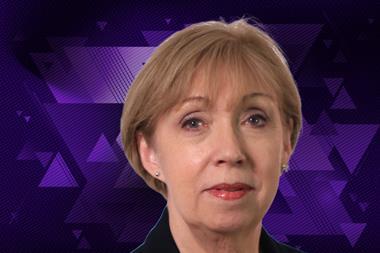Many of the best retailers advocate listening to customers and staff alike. In fact, for many chief executives, it seems their sole mantra.
But how should you go about this? While good, old-fashioned verbal communication may be best, feedback from employee engagement surveys – also known as satisfaction or attitude surveys – can prove invaluable in improving ways of working, as well as morale, because they allow opinions to be given anonymously.
“These surveys have evolved over the past 10 years or so,” says Karen Wisdom, director of employee relationship management research at Ipsos Mori, which runs surveys for retailers in the grocery, electricals and fashion sectors. “Before, they were very much about measuring attitude, but now they are much more aligned with the business. For instance, there can be high levels of satisfaction, but that may not necessarily translate into productivity. Engagement looks at employees’ willingness to go the extra mile for a retailer.”
Ownership of the survey is vital. Although it may be an HR initiative, it should be seen to have the backing of the board. Boots has been running a regular employee engagement survey for the past eight years, but in 2006 it moved from a paper-based and online survey system to an automated telephone survey that begins with an introduction from the company’s managing director. Staff throughout the organisation, from boardroom to the shopfloor, complete the survey.
Understanding the survey’s objectives is essential, says Kate Pritchard, divisional manager for employee research at ORC International, which runs Boots’ survey. “You need to make sure the questions meet your needs. We will sit down with focus groups and interview key stakeholders to devise the questions,” she says.
Boots’ Great Place to Work survey is run every January and July. “It’s a temperature check we do twice a year and we make sure it’s a survey of engagement as opposed to just an opinion survey,” says Boots director of organisation development Stuart Branch. “It’s a measure of how engaged our colleagues are and sits as one of many tools that we use to talk to them.”
Questions are based on subjects such as whether colleagues feel they have the correct tools to do their jobs, whether they receive praise and recognition from managers and whether managers act on good ideas. “It’s very much questions about how they feel about the team and the environment in which they work,” says Branch.
He says the move to the telephone-based system has helped lift the response rate to 96 per cent, because the survey is easier for staff to complete. Staff are given personal identification numbers, which help identify their store and department, but the individual’s answers remain anonymous. The survey is conducted via a freephone number, which staff can ring from the store or from home and answer by pressing numbers on the keypad.
Paper surveys remain the most common method for gauging staff sentiment, however. Online surveys don’t work so well, because PCs aren’t readily available to shopfloor staff. Pritchard says ease of completion is vital and it should be possible to complete surveys within 10 minutes. “You can make it an event – for instance, everyone fills it in over a cup of coffee,” she says. She also suggests appointing survey champions in each store who encourage participation.
A high response rate is intrinsic to the value of such surveys, but it cannot be taken for granted that staff will be forthcoming about taking part. “The single biggest barrier to staff completing them is a lack of faith that views will be taken seriously and acted upon,” says Wisdom.
Thorntons completed its third satisfaction survey, branded Your Voice, last summer. At the moment, the survey is only answered by store managers, but it will eventually be rolled out to all staff. “Every year, we have seen an increase in the response rate and believe this has been achieved by the way the results have been communicated, the openness and honesty of the business and the way that store managers can see we take their views seriously and implement actions,” says Thorntons head of HR Joanne Attenborough.
A force of habit
At Boots, Branch says staff now expect to complete a survey every six months. “It has become part of what they do. We are very proud that, through a lot of hard work and some luck, we have created a culture where team members want to complete the survey,” he says. And he believes that part of that culture is down to staff’s belief that their voice will be heard. “We have a very good reputation for acting on the results of the survey. That’s the Holy Grail that every organisation should be trying to achieve.”
And retailers need to act fast, says Insight Management Feedback business psychologist Jacqui van Loen. “It is important for employees to see the results quickly; otherwise, when you run the survey again, it will be perceived as an attempt to appease staff, there will be a lower take-up and engagement may go down because employees’ expectations have been raised, but nothing has been done,” she says.
Changes made as a result of a survey should be clearly highlighted as such, says Wisdom. “Sometimes, there has been action, but it’s not been communicated properly or not been linked back to the survey results.”
At Boots, the results are not only presented as an overall barometer of feeling within the company, but are also broken down by area, store and department, allowing local managers to create action plans for each – again, this is key to getting the most out of such surveys. “Every team gets a score and that will help the team leader identify what they need to do to improve the environment and the support given to staff,” says Branch.
At Thorntons, the results are communicated at two levels. “The first one, at company level – which highlights the highest and lowest scores – is compared with the previous year’s results and other retailers as a benchmark,” says Attenborough. “This information is shared with store managers through the company’s employee representative forum, local meetings and by using a communication leaflet. Actions are agreed based on the results and focus groups established to improve areas of concern.
“The second level is a breakdown by geographical region, which is provided to area managers who then assess the positives and negatives for their area and create their own area action plan,” she says.
While many retailers may run employee surveys, how seriously they take them differs widely. Wisdom says: “For some, it’s a box-ticking exercise, which is a complete waste of money. If you use it properly, it has a powerful and tremendous contribution to make in measurements that will affect the bottom line.”
Branch agrees that such surveys really do correlate with commercial success. “We have been able to prove that the stores with the best results in the survey generally deliver the best results in terms of business metrics,” he says.
Take these surveys seriously and your staff will, too. Only then can you hope to get some answers as to how to improve performance.


























No comments yet